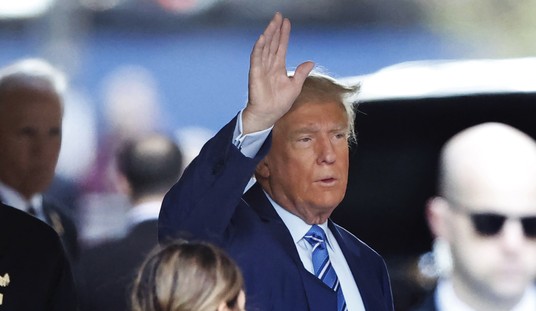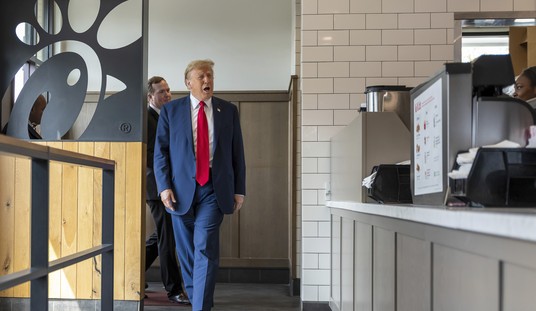Oh, let’s not always see the same hands. The answer to which approach during the pandemic delivered the best results in school districts, both scholastically and medically, won’t surprise our readers or anyone who understood the risk factors involved.
No, the big surprise is that the answer comes from the Washington Post — and that’s going to be awkward in the Beltway:
While most of the nation kept students at home for part or all of the last academic year, these schools in the suburbs of Colorado Springs, like thousands of others around the country, opened with the overwhelming majority of students in their seats. Masks were optional in elementary school. Although middle- and high-schoolers began with hybrid learning, in November, high school-aged students with significant special education needs were back in-person five days a week.
In the country’s largest school systems, such as those in New York City, Los Angeles, D.C. and Chicago, teacher unions and concerned parents fought plans to reopen. Public health officials warned that social distancing would save lives, and schools responded by devising hybrid programs or simply sticking with virtual learning. But, over time, these measures also imposed costs: Today, students are contending with significant learning loss and mental health issues.
Yet thousands of school districts — typically small ones in conservative-leaning counties — reacted to the pandemic like Lewis Palmer District 38 did. Officials in this largely White and affluent school district of 6,600 students near the U.S. Air Force Academy argue they took the right approach to reopening schools. No child was hospitalized with the virus; two school system employees were admitted, though contact tracers did not determine where they contracted the virus, school officials said.
And overall, results from standardized tests show that the average student in Lewis-Palmer made gains in reading. While they lost ground in math, they performed better than the average Coloradan. SAT scores remained steady.
“Debate continues over which approach was the right one,” the Post intones. Why? We have known almost since the beginning of the pandemic that children had a much lower risk for acute COVID-19. Studies out of the UK early on showed open schools didn’t boost community transmission of the virus, either. Then-CDC director Robert Redfield recognized the trade-offs, at least, as early as July 2020, let’s not forget:
.@ABC NEWS EXCLUSIVE: @CDCDirector Dr. Robert Redfield on how bad the COVID-19 crisis could get. “It is very hard to predict.”https://t.co/aQQ6s3kY6z pic.twitter.com/PbiMPVNNHQ
— Good Morning America (@GMA) July 22, 2020
As the new school year nears, Redfield said he would “absolutely” be comfortable with his grandchildren heading back to their classrooms. Redfield added he only may have “some reservation” about his grandson with cystic fibrosis, “depending on how he could be accommodated in the school.”
“I think it’s really important to get our schools open,” he said. “It’s not public health versus opening the schools or the economy — it’s public health versus public health. I think there really are a number of negative public health consequences that have happened to our K-12 [students] by having schools closed.”
“So it’s so important now to work together with school districts to figure out how they can take our guidelines and operationalize them in a practical way and to do it in a way that is safe,” he continued.
Anthony Fauci himself endorsed this same point of view three weeks later in August 2020. By March 2021 — almost exactly a year ago to the day — American researchers were blasting the CDC for keeping guidelines in place that prevented full school reopenings. An editorial in USA Today at that time by these researchers not only argued the trade-off considerations but also refuted the idea that schools represented a threat for amplifying community transmission:
Here are the facts:
First, children are not at significant risk of poor outcomes from COVID-19. As of Tuesday, 288 children have died from the disease in the United States, compared with more than 500,000 adults. While the death of any child is devastating, this is similar to the number who dies from influenza each year.
And COVID-19 deaths in children and adolescents are magnitudes smaller than deaths from suicide, some now driven by school closure. Coronavirus in children can cause potentially dangerous complications — e.g., multi-inflammatory syndrome in children (MIS-C) — but this is very rare and in nearly all cases treatable.
Second, viral spread is minimal in schools with appropriate safety precautions, even in communities with a high disease prevalence (significantly higher than the CDC red zone that the CDC suggests middle and high schools be all virtual and elementary schools hybrid).
That settled the “debate” at least at that point in time a full year ago, if not before. And yet the CDC refused to change its guidelines for months, under pressure from teachers unions to provide a pretext for their refusal to re-enter classroom settings. Even as late as the last few weeks, unions have still pushed back on fully reopening and ending mask mandates that have no impact on risk for children or adults in classroom settings. Worth noting, too — those studies took place before vaccines became available, and well before Joe Biden ordered early priority access for teachers to vaccinations.
As Jonathan Chait put it two months ago, school closures were a “catastrophic error,” one for which teachers unions, school boards, and their progressive supporters will have to answer. They rejected evidence and science, Chait emphasized, and sold fear instead:
It is now indisputable, and almost undisputed, that the year and a quarter of virtual school imposed devastating consequences on the students who endured it. Studies have found that virtual school left students nearly half a year behind pace, on average, with the learning loss falling disproportionately on low-income, Latino, and Black students. Perhaps a million students functionally dropped out of school altogether. The social isolation imposed on kids caused a mental health “state of emergency,” according to the American Academy of Pediatrics. The damage to a generation of children’s social development and educational attainment, and particularly to the social mobility prospects of its most marginalized members, will be irrecoverable.
It is nearly as clear that these measures did little to contain the pandemic. Children face little risk of adverse health effects from contracting COVID, and there’s almost no evidence that towns that kept schools open had more community spread. …
By the tail end of spring 2020, it was becoming reasonably clear both that remote education was failing badly and that schools could be reopened safely.
What happened next was truly disturbing: The left by and large rejected this evidence. Progressives were instead carried along by two predominant impulses. One was a zero-COVID policy that refused to weigh the trade-off of any measure that could even plausibly claim to suppress the pandemic. The other was deference to teachers unions, who were organizing to keep schools closed. Those strands combined into a refusal to acknowledge the scale or importance of losing in-person learning with a moralistic insistence that anybody who disagreed was callous about death or motivated by greed.
Let’s put it more bluntly. Progressives and Democrats sold out to the teachers unions, including at the CDC. That hasn’t been a debatable point for months, just the same as which school access policies worked best in the pandemic. The only real debates still left on the table is whether these Democrats and progressives will pay a price for their sell-out, and whether the CDC can ever shift back to a science-based rather than politics-based organization.








Join the conversation as a VIP Member